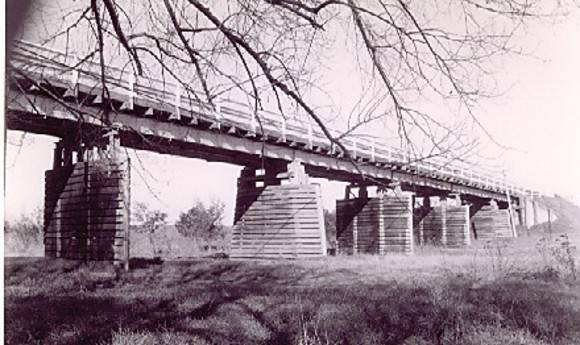| Back to search results » | Back to search page » |
|
Wuk Wuk Bridge
LocationLindenow-Glenaladale Road,, LINDENOW VIC 3865 - Property No B6908
File NumberB6908LevelState |
|
Statement of Significance
This large composite timber-steel-concrete girder bridge built by the old Shire of Bairnsdale in 1937, is historically, scientifically and aesthetically significant at State level. In 1935 Victoria's Country Roads Board had initiated and promoted a new trend in Victorian bridge engineering, whereby the use of traditional timber-bridge elements like pile-piers and timber decks and side-rails was intelligently integrated with the use of concrete for abutment sheeting and steel-joists in place of traditional timber stringers for greater span length. The Wuk Wuk Bridge is a very good and representative example of that novel trend in Victorian bridge engineering that in the mid-to-late thirties largely replaced an earlier dependence on timber-truss spans for flood-prone Gippsland river sites.
Historically, this bridge represents a novel engineering response to a big problem created for Gippsland bridge builders by a series of unprecedented and devastating floods that hit major Gippsland waterways during the early to mid-1930s. Big Snowy River bridges as far apart as McKillop's Crossing and Orbost had been washed away in 1934, and in 1936 two big Mitchell River bridges (at Glenaladale and Wuk Wuk) were devastated by similar freak floodwaters. In their very different ways, the latter two bridges illustrate typical design responses of the mid-1930s, to a very challenging flood problem whose exact parameters were then unknown. The simpler girder-type Wuk Wuk Bridge is the more representative and better-preserved example of a mid-1930s "flood-proof" composite timber-and-steel bridge, designed for a hazardous Victorian river flood-plain site.
Scientifically, these acute flood problems of Gippsland in the 1930s encouraged Victorian bridge engineers to experiment widely with flood-resistant structures by combining the best elements of timber, steel and concrete. Whereas at Glenaladale and McKillop's Crossing that experimentation enjoyed State funding through the CRB and involved electric-welded steel trusses used in conjunction with timber and concrete, the Wuk Wuk site was used to develop a simpler but equally novel style of large composite girder bridge using an elaborate timber substructure in conjunction with a big longitudinal-timber deck. The problem of creating adequate waterways for extreme floods was solved at Wuk Wuk by the use of unusually lengthy (over 16 metre) steel-joist spans, rather than by the use of complex trusses of timber or of steel. The particular mix of elaborate dual-pile piers with timber sheathing, and lengthy steel-joist supports for a largely-timber superstructure, was a direct response to the serious and historic flood problem, and sets the Wuk Wuk Bridge apart from other surviving river bridges of similar general type and vintage. This is the most impressive and best-preserved Victorian timber river bridge to feature complex dual-pile timber-piers with horizontal timber sheeting to protect piles against floating logs and debris.
Aesthetically, this big river bridge with its unusually picturesque tall timber-sheathed substructure, and its lengthy timber deck supported by clear lines of steel, contributes much to its broad river-flood-plain context. The Mitchell River near Bairnsdale is a very impressive and attractive stream, and the Wuk Wuk Bridge is a grand and fitting structure for a rural road set in those unusual flood plain environs.
Classified: 06/07/1998
File note 25/11/2011: in 2010 the East Gippsland Shire removed the timber deck and replaced it with concrete; replaced the timber railings with look alike steel; replaced the wooden piles and timber sheeting with steel piles.
Group
Transport - Road
Category
Road Bridge




